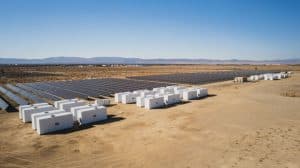
Nio plans to build its first battery plant to produce big cylindrical cells similar to those used by Tesla, two people familiar with the matter said, as the Chinese EV maker seeks to cut its reliance on suppliers like CATL.
The new plant will have an annual capacity to produce 40 gigawatt hours (GWh) of batteries, which can power about 400,000 units of long-range electric vehicles (EVs), the people said on condition of anonymity as the matter is private.
It will be located next to its main manufacturing hub in Hefei city, in eastern China’s Anhui province, they said.
Reuters is reporting the details of Nio’s plan for the first time. The automaker did not immediately respond to a request for comment on Friday.
The company’s founder and Chairman William Li said last June that Nio would start making 800-volt lithium-ion battery packs, which recharge faster, in the second half of 2024, as part of a plan similar to Tesla’s to use a combination of self-produced and externally sourced batteries in the long run.
He did not elaborate on the details at the time.





